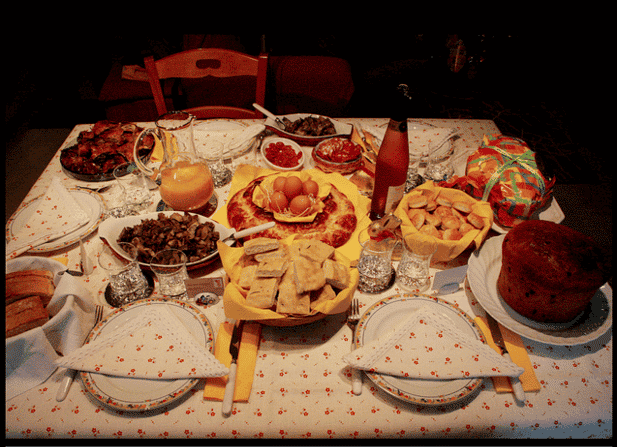Easter recipes and traditions from North to South Italy
A journey through Easter recipes and traditions from North to South Italy.
Italian Easter Recipes
Colomba Pasquale
The Easter holidays, like everywhere, are a time of meeting with family and friends and an opportunity to taste the various delicacies, some regional, some by now on the tables all over Italy. Let’s start from a classic, there is no Easter indeed without the classic Colomba. A tradition from Lombardy region, the story of the colomba has always been surrounded by myths and legends. Though it was born in the 30’s in the company Motta, already producing panettone, it seems that even before they were made sweet or savory pies with this shape because of its symbolic form for Christianity. The preparation of the colomba includes the use of flour, butter, eggs, sugar, candied orange peel and almonds, that differentiate it from Panettone, but there are also many variants stuffed with creams of all kinds.
Torta Pasqualina
Moving towards Liguria, on the tables of Easter Sunday can not miss the Pasqualina cake. Its history is very old and dates back to XV century. It is a kind of pie made with a plain puff (water, flour, salt and oil) and usually stuffed with chard, ricotta and eggs. Some variants are with spinach or artichokes. Traditionally the sheets of dough have to be 33, just like the years of Christ.
La Crescia di Pasqua
We continue our tour in the Marche where we find the delicious Crescia, a mushroom-shaped cheese pie that is often eaten on Easter morning and also ideal for the picnic on Easter Monday!
Fiadoni
Abruzzo in Easter period is rather famous for Fiadoni, delicious panzerotti made of puff pastry filled with local cheeses, usually pecorino cheese, cow or sheep ricotta and then aromas and spices such as pepper, nutmeg and saffron, all mixed with eggs. The fiadoni take their name probably after a latinization of the Germanic word “fladen”, meaning “swollen thing”, first turned into “flado” and in the end in the Italian word fiadone.
Easter Roman Breakfast
Much loved by the romans is the typical Easter breakfast that is traditionally eaten on Easter Sunday morning. The table is laden with cheeses, cold cuts and eggs, that symbolize life and rebirth, pies, coratella (offal with artichokes or onions) and a typical anise cake. The Easter breakfast in Rome is a real institution that opens this celebration with joy and a success of flavors.
Pastiera
One of the most famous sweets is definitely Pastiera, the Neapolitan food tradition by now widespread and beloved throughout Italy. It is a sweet pastry dough stuffed with a cream made of ricotta cheese, candied fruit, sugar, eggs and wheat boiled in milk. To make it even more delicious and fragrant, it is flavored with cinnamon, orange peel, vanilla and orange blossoms. Apparently pastiera descends from pagan offerings during the spring festivals.
Casatiello
In Naples we also find the famous Casatiello, a very tasty savory pie stuffed with cheese, salami and bacon. Both pastiera and casatiello are related to the ancient pagan rituals of thanks to the gods.
La Cuddura
Finally we land in Sicily, where among the many Easter recipes we find the delicious Cuddura, a typical dessert of circular shape of Orthodox origin, incorporating a variable number, but always odd, of shell eggs. Tradition has it that the young women used to give this cake to engaged couples the Day of Resurrection. The word cuddura derives from the greek κολλύρα (kollura) and means crown, due to the form of the braided pastry crown.








